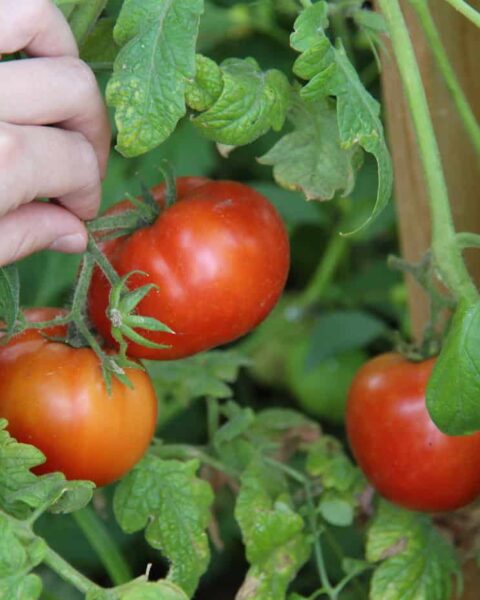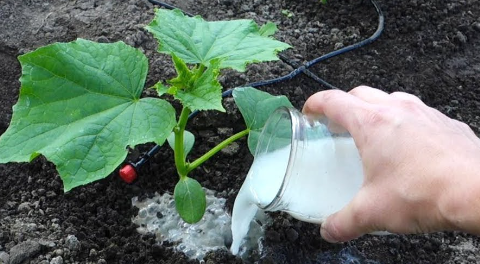Upside-down tomatoes may seem like a quirky gardening trend, but they offer numerous benefits that make them worth considering for any aspiring or seasoned gardener. This innovative method of cultivation not only saves space but also enhances plant health and simplifies maintenance. In this article, we’ll delve into the reasons why growing tomatoes upside down is advantageous and provide a step-by-step guide on how to do it effectively.
Why Upside-Down Tomatoes?
- Space-Saving Solution: Traditional tomato plants require ample space to sprawl and often need stakes or cages for support. In contrast, growing tomatoes upside down allows you to utilize vertical space effectively, making it an ideal option for small gardens, balconies, or even indoor spaces. By suspending the plant upside down, you free up ground space for other crops or simply for easier navigation in your garden.
- Improved Air Circulation and Sunlight Exposure: When tomatoes are grown upside down, their foliage hangs freely, facilitating better air circulation around the plant. Improved airflow helps reduce the risk of fungal diseases such as blight and encourages the even distribution of nutrients. Additionally, hanging tomatoes upside down exposes more foliage to sunlight, promoting optimal photosynthesis and enhancing fruit production.
- Reduced Pests and Diseases: Ground-dwelling pests and soil-borne diseases pose significant challenges to traditional tomato cultivation. By elevating the plants, upside-down gardening minimizes the risk of pests like cutworms, slugs, and rodents accessing the fruits. Moreover, the separation from soil reduces the likelihood of soil-borne diseases affecting the plants, leading to healthier and more productive tomato crops.
- Easy Maintenance and Harvesting: Upside-down tomato gardens are easier to maintain compared to traditional methods. With the plant suspended, weeding becomes less of a chore, and there’s no need for cumbersome staking or pruning. Harvesting is also simplified since the ripe fruits hang below, within easy reach. This accessibility makes it an excellent option for gardeners with limited mobility or those seeking a low-maintenance approach to gardening.
How to Grow Upside-Down Tomatoes:
- Choose the Right Container: Select a sturdy container with a wide opening at the bottom to accommodate the tomato plant’s root ball. Options include specialty upside-down planters, five-gallon buckets, or even repurposed containers such as large plastic bottles or baskets.
- Prepare the Plant: Start with a healthy tomato seedling or young plant. Gently remove it from its pot, being careful not to disturb the roots excessively. If using a bucket or similar container, drill a hole in the bottom large enough for the plant to pass through.
- Insert the Plant: Thread the tomato plant through the bottom of the container, allowing the foliage to hang downwards. If necessary, add a layer of newspaper or landscape fabric to prevent soil from falling out. Fill the container with a nutrient-rich potting mix, leaving enough space for watering.
- Water and Fertilize Regularly: Water the plant thoroughly after planting, ensuring that the soil is evenly moist. Tomatoes grown upside down may require more frequent watering due to increased exposure to sunlight and wind. Additionally, fertilize the plant regularly with a balanced fertilizer to support healthy growth and fruit development.
- Hang and Support the Container: Hang the container in a location that receives at least six to eight hours of sunlight per day. Ensure that the support structure can bear the weight of the container and the growing plant. Consider using sturdy hooks, brackets, or a dedicated hanging system to secure the container in place.
- Monitor and Maintain: Keep an eye on the plant for signs of pests, diseases, or nutrient deficiencies. Prune any damaged or overcrowded foliage to promote airflow and prevent disease spread. As the tomatoes ripen, support the weight of the fruits with slings or netting to prevent them from pulling down the plant.
Conclusion: Growing tomatoes upside down offers numerous advantages that make it a worthwhile endeavor for gardeners of all skill levels. From saving space to promoting plant health and simplifying maintenance, this innovative gardening technique can lead to bountiful harvests of juicy, homegrown tomatoes. By following the steps outlined in this article, you can enjoy the benefits of upside-down tomato gardening and add a unique twist to your gardening repertoire.





